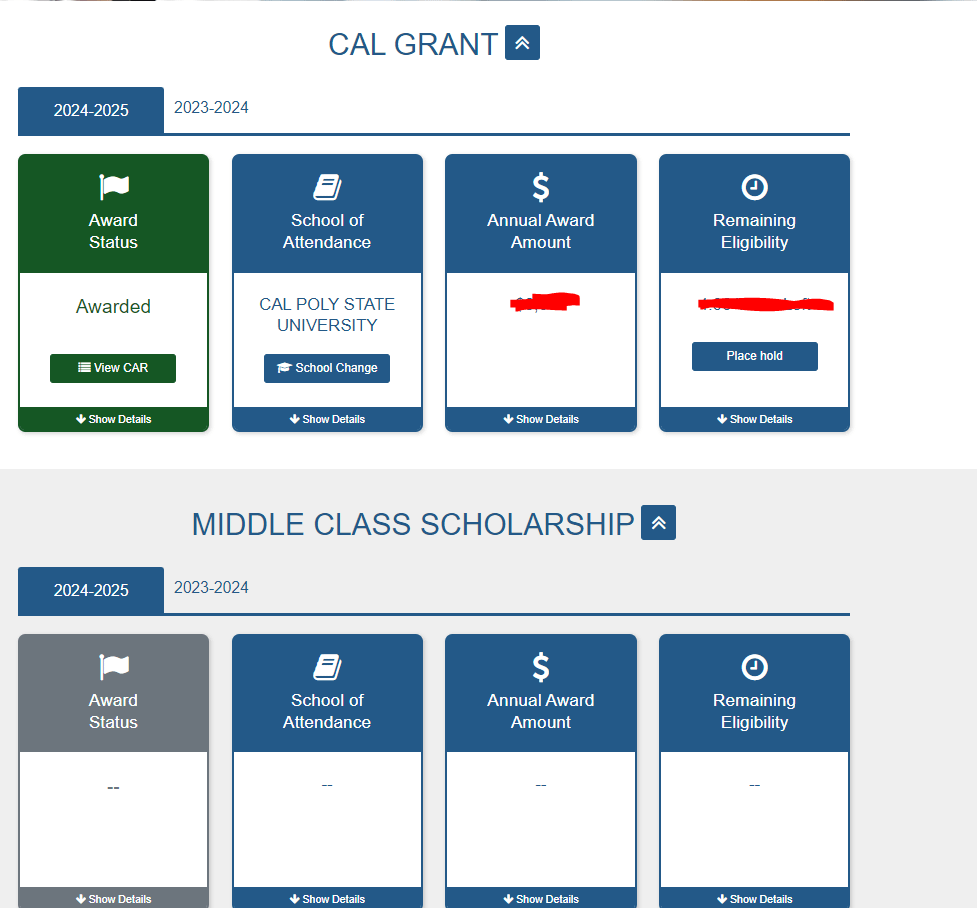With the escalating cost of education, the middle class finds itself in a precarious position, often earning enough to be ineligible for substantial financial aid, yet not sufficiently affluent to afford education easily. This emerging gap has spurred the increase in scholarships tailored to this demographic, recognizing their crucial role in society. It poses the question of how we can ensure equitable access to higher education for those who are not considered low-income but are still financially strained.
The inception of middle class scholarships addresses this widely overlooked group, offering alleviation where traditional financial aid falls short. As early as the mid-20th century, there was a shift to support this often-neglected segment of the population, highlighting the economic contributions and potential they offer. Today, many scholarships target specific middle-class challenges, such as covering tuition or associated educational costs, thus enabling broader academic and professional opportunities for these families.
 Source:
Source:
The Rise of Middle Class Scholarships
Over the last decade, there’s been noticeable growth in scholarships aimed at the middle class. As tuition fees continue rising, many families find themselves in a tight spot. They earn too much for traditional aid yet too little to pay for college comfortably. Scholarships designed for these families help bridge this gap. These opportunities are slowly gaining recognition and support among both educational institutions and communities.
Middle class scholarships offer multiple benefits for students and families. Primarily, they ensure that deserving students aren’t missed due to financial limitations. Offering aid to these students means universities can enrich their student body diversity. Financial stress is reduced, allowing students to focus more on academic and extracurricular achievements. Such scholarships are now seen as vital in promoting equal opportunities.
Various programs cater specifically to middle-class families, creating numerous options for eligible students. According to here is the article, institutions are keen on finding solutions that include family and community outreach. These programs often consider family size, regional cost of living, and other factors to assess eligibility. The comprehensive approach ensures that more students can benefit from the programs. It’s paving the way for better educational access across the nation.
Experts predict that middle class scholarships will undergo significant enhancement in the coming years. As more families become aware, demand for these scholarships increases. Schools and private organizations are eager to support this demand with tailored scholarship plans. The rising trend points to a future where financial aid is more inclusive and accessible to the middle class. The focus remains on ensuring no capable student is left behind in pursuit of higher education.
The impact of shifting income dynamics on education funding
As income dynamics evolve, the funding landscape for education shifts dramatically. Households that once easily managed tuition costs now find themselves struggling. Income stagnation and rising living costs have created a squeeze on family budgets. Many families are pushed into difficult choices between essentials and education costs. This has led to increased demand for scholarships and financial aid.
Schools and universities are responding to these changes by re-evaluating their funding models. New scholarships are being created specifically for those in the middle-income bracket. These schools aim to ensure that bright students don’t miss educational opportunities due to financial limitations. Collaboration with private organizations also adds diverse funding sources. This joint effort aims to make education accessible to all economic layers.
Several factors contribute to changing income dynamics affecting education funding. Job market shifts and varying wage growth are significant causes of financial strain.
- Increasing Automation
- High Living Expenses in Urban Areas
- Fluctuations in Housing Markets
Schools constantly adapt to these influences, striving to maintain affordability for many families. These adaptations help preserve higher education standards, despite economic challenges.
Ultimately, policymakers play a crucial role in addressing income challenges to education funding. By adjusting policies and increasing support for middle-income families, they ensure that education remains a priority. Discussions about income distribution and social funding are ongoing. This aids education institutions in aligning their financial aid strategies with the present realities. Progress in this area remains vital for sustaining educational access and equity.
Key Features and Benefits of Middle Class Scholarships
Middle class scholarships have unique features that address the financial needs of families caught in the middle. Unlike traditional scholarships, they specifically cater to families earning above low-income but not enough to comfortably fund college expenses. These scholarships consider a range of factors for eligibility, like family size and geographic cost of living. They are designed to provide substantial support, covering tuition fees and even essential supplies. In doing so, they alleviate financial pressure and make college more accessible.
One significant benefit of these scholarships is reducing the student debt burden. Many students graduate with large amounts of debt, impacting their financial future. Middle class scholarships can significantly lower the amount they need to borrow. With less debt, graduates can focus on career advancement without the looming stress of loan repayments. This makes higher education a more promising investment for families.
Another feature is the flexible eligibility criteria, welcoming a wide range of students. The scholarships often use a combination of criteria, allowing more students to qualify.
- Academic Performance
- Extracurricular Activities
- Parental Income
By considering such diverse criteria, they give students who might miss out on other scholarships a fair chance. This inclusive approach ensures deserving students are not left behind.
The scholarships also empower students to focus on their studies and extracurricular activities. Without overwhelming financial stress, students engage more fully in their college experience. They can participate in more projects, clubs, and internships, enriching their academic journey. By fostering both academic and personal growth, middle class scholarships create a more balanced and rewarding educational experience. This cultivates well-rounded individuals ready to contribute effectively to society.
Notable Middle Class Scholarships and their Eligibility Criteria
Several scholarships stand out for middle class families, easing their financial burden. One such scholarship is the Middle Class Scholarship Program in California. It aims to make education more accessible by covering a significant portion of tuition costs. Eligibility typically depends on family income and household size. This scholarship provides a direct pathway to affordability for many families.
Another important scholarship is the Excelsior Scholarship, offered in New York. This program allows students to attend college tuition-free at select public universities. To qualify, students must meet academic criteria and maintain a specific grade point average. Family income is also a determining factor for eligibility. This offers families the chance for top education without excessive costs.
The MCS award is specifically designed for students in the middle class who need extra financial assistance. Eligibility involves meeting certain criteria, like maintaining a satisfactory GPA. It offers financial aid that covers up to a certain percentage of tuition costs. Students benefit because they might not qualify for aid elsewhere. This scholarship bridges the gap for many students aiming for higher education.
Sally Mae offers a range of scholarships targeting middle-income families. Meeting eligibility often includes demonstrating academic achievement and extracurricular involvement. Their scholarship database is one of the largest, offering numerous options. Students can gain access to different fields of study through these awards. By emphasizing both academics and activities, these scholarships support well-rounded students.
Scholarships.com is another resource offering tailored scholarships for middle class families. Eligibility varies, focusing on diverse criteria like academic performance and community service. Their database helps match students with suitable scholarship opportunities. This platform provides a broad selection for middle-income students. Supporting students in finding the right fit boosts their chances of attaining a college degree.
These scholarships demonstrate the commitment to providing educational opportunities for middle-class families. They relieve financial stress while allowing students to pursue their academic dreams. Eligibility criteria are flexible, making them accessible to a wide range of students. With these scholarships, families can focus more on education than financial obstacles. They represent genuine avenues for educational success in today’s economy.
Securing a Middle Class Scholarship: A Step-by-Step Guide
Securing a middle class scholarship starts with understanding available opportunities. Begin by researching scholarships that specifically target middle-income families. Many schools and organizations provide online databases to explore potential options. Once scholarships are identified, review their eligibility criteria carefully. This helps focus efforts on scholarships that are a good fit.
Next, gather all necessary documents required for applications. Common documents include academic transcripts, letters of recommendation, and financial statements. It’s advisable to prepare a checklist to ensure nothing is missed. Keeping these documents organized and accessible makes the process smoother. Being well-prepared ensures timely submission and reduces stress.
Completing the application is a crucial step in securing a scholarship. Fill out each section with accurate and honest information. Tailor essays or personal statements to reflect personal goals and experiences. Highlight achievements and passions that align with scholarship criteria. Authentic and compelling applications stand out to reviewers.
After submission, follow up to confirm receipt of the application. Keep a record of submitted documents and correspondence with scholarship providers. Many programs will communicate via email, so it’s important to check regularly. Patience is key as this process may take time. Following up demonstrates commitment and interest.
If additional interviews or evaluations are part of the process, prepare thoroughly. Research potential questions and practice responses with friends or family. Confidence and clear communication during interviews leave a positive impression. Every interaction is an opportunity to showcase suitability for the scholarship. Success follows preparation and effort in each step.
By following these steps diligently, students enhance their chances of securing a scholarship. This methodical approach ensures that no details are overlooked. Families gain financial support, enabling students to focus on their educational journey. Pursuing middle class scholarships can significantly ease financial concerns. It paves the way for academic and career aspirations.
The Future of Middle Class Scholarships
The future of middle class scholarships looks promising as educational costs continue to rise. More institutions recognize the need to assist families who fall into the income gap. These scholarships are likely to expand in both number and scope. Enhancements in scholarship criteria will accommodate changing economic conditions. This evolution ensures that more students can benefit from financial aid.
Technology will play a crucial role in administering these scholarships. Online application platforms make the process more accessible and streamlined. Schools and organizations can better manage resources and communicate with applicants. This ease of access encourages more students to apply, broadening the impact of these programs. Increased transparency builds trust with families seeking aid.
As public support grows, policy changes are anticipated. Lawmakers may advocate for increased funding directed towards middle class scholarships. This support can transform these programs from supplementary aids to significant contributors to educational financing. Policy shifts reflect a societal commitment to making education affordable for all. This paves the way for systemic improvements in educational access.
Collaboration between educational institutions and private sectors can further enhance these scholarships. Companies and organizations are increasingly investing in education-focused initiatives. Partnerships can introduce scholarships that align with specific industry needs. Students gain educational benefits and opportunities for future employment. This symbiotic relationship fosters academic and economic growth.
The dynamic nature of middle class scholarships ensures that they will continue to adapt to new challenges. By focusing on innovative solutions and broadening eligibility, these scholarships can fulfill their potential. As the societal landscape shifts, these programs remain integral. They promise continued support for families striving for educational advancement. The future holds exciting prospects for sustainable scholarship growth.

